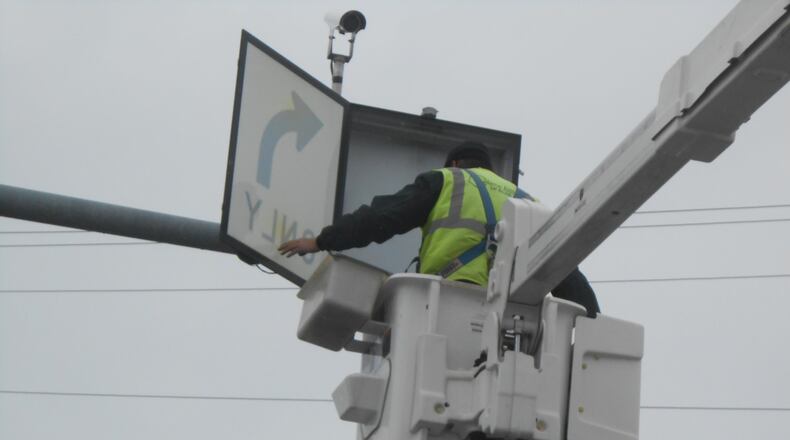“We’re doing something at almost every one of them,” Mann said.
That includes improvements to push buttons, back plates, lighting, signals and illuminated street signs retrofitted with energy-efficient LED lights.
“A lot of them are safety upgrades for both pedestrians and vehicles,” he said.
COMMUNITY NEWS: This Fairfield Twp. neighborhood may be distressed, but a community effort is ready to help
Other traffic signal upgrades include having some type of battery backup system at every intersection in case of a power outage “so the signals stay operational,” Mann said.
The contract also calls for vehicle detection upgrades to improve traffic flow by relieving congestion.
Capital Electric’s bid came in close to the engineer’s estimate and was not the lowest among the three received. However, the Dayton-based company is also contracted by the city to maintain the traffic lights, and city contracts are awarded to “the best and the lowest bidder,” according to city documents.
Contracted work will require temporary lane closures, but Mann said it would be “nothing significant” as workers move around the city.
Ohio 4, the city’s busiest thoroughfare, is nearly complete with upgraded illuminated street signs, but workers still need to upgrade video detection at Ohio 4 and Nilles and radar detection at Ohio 4 and Seward. The detection devices, which are mounted atop of the traffic signal poles only detect the presence of vehicles, Mann said.
There are microphone detection devices, but those are only to detect emergency vehicles.
COMMUNITY NEWS: A unique Butler Tech program is getting attention and will soon go national
“When we’re done, we’re going to have emergency vehicle detection at every intersection, we’re going to have overhead detection — either video, radar or both — at every intersection,” Mann said.
When it’s all said and done, the city’s 61 intersections will be “a little more uniform throughout the city,” Mann said.
“Whenever we upgrade an intersection, we’re adding all these components,” he said. “But to go back to make sure we have them at all of them is maybe is one-step further than everybody else has done at this point. Every community is working toward the same goals, I think.”
About the Author

